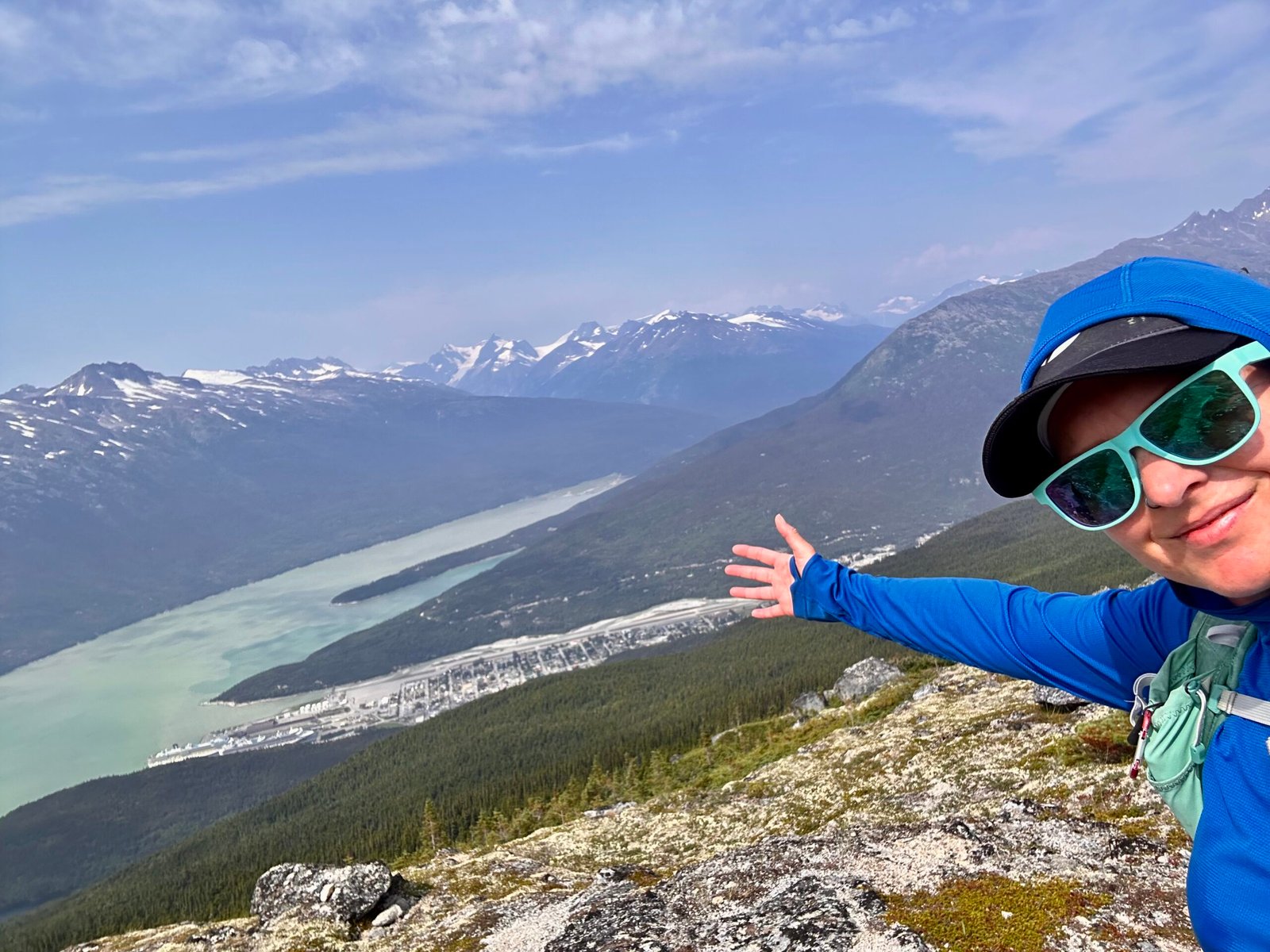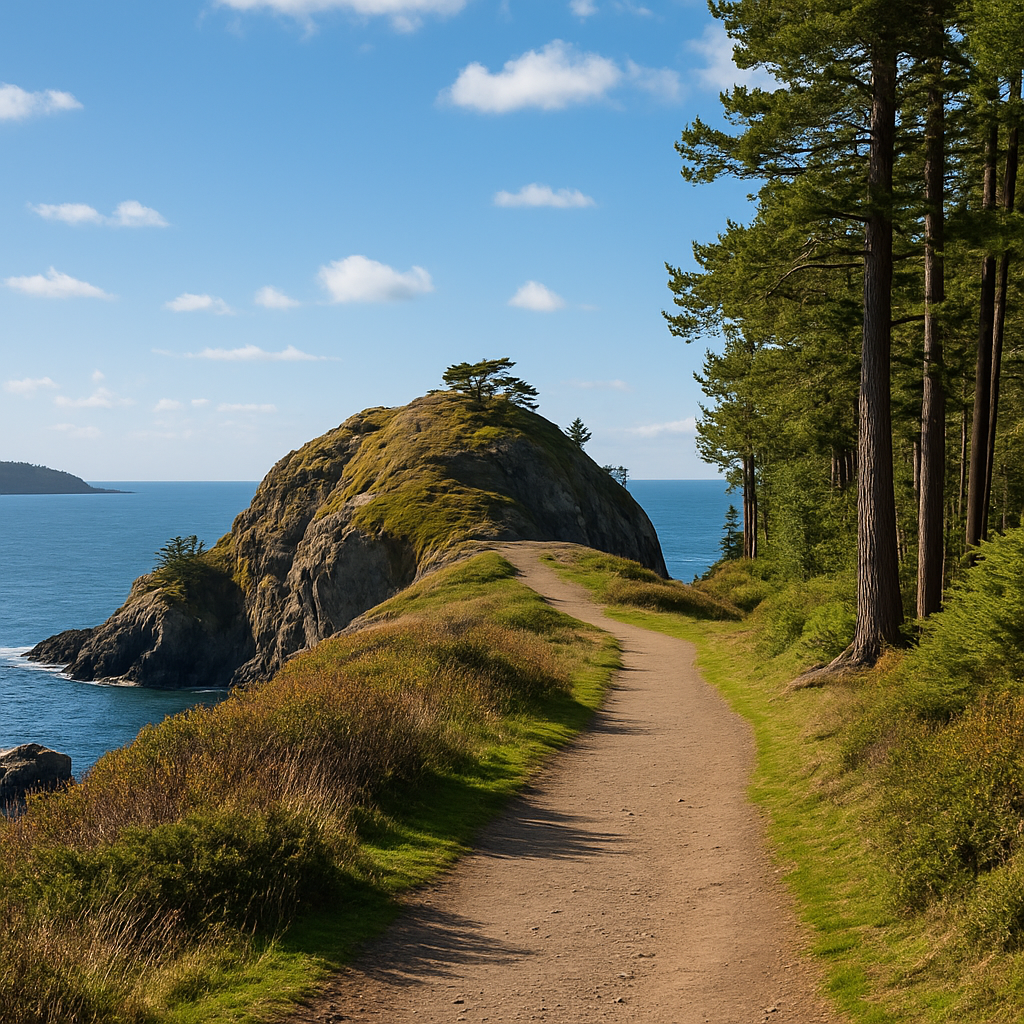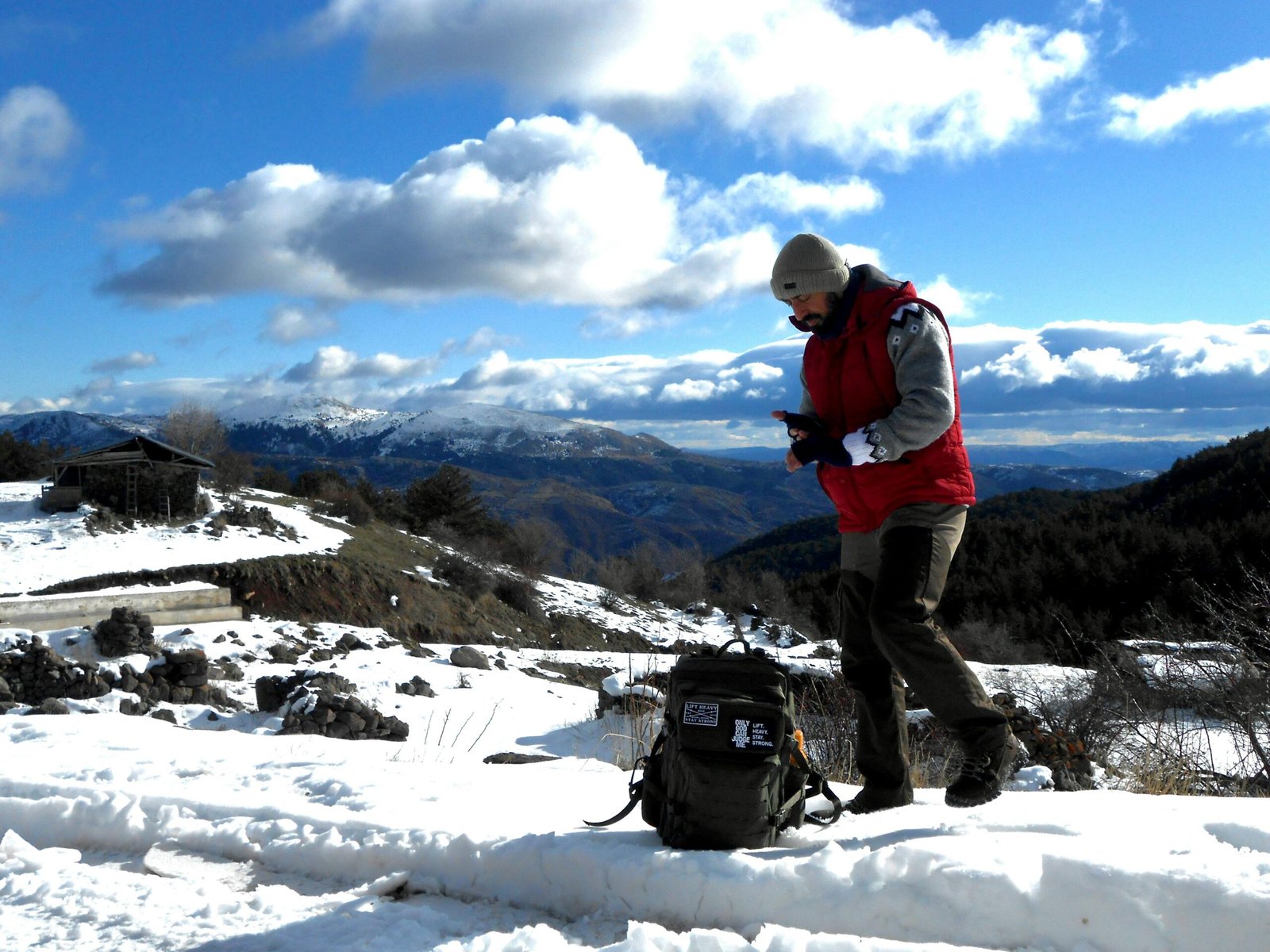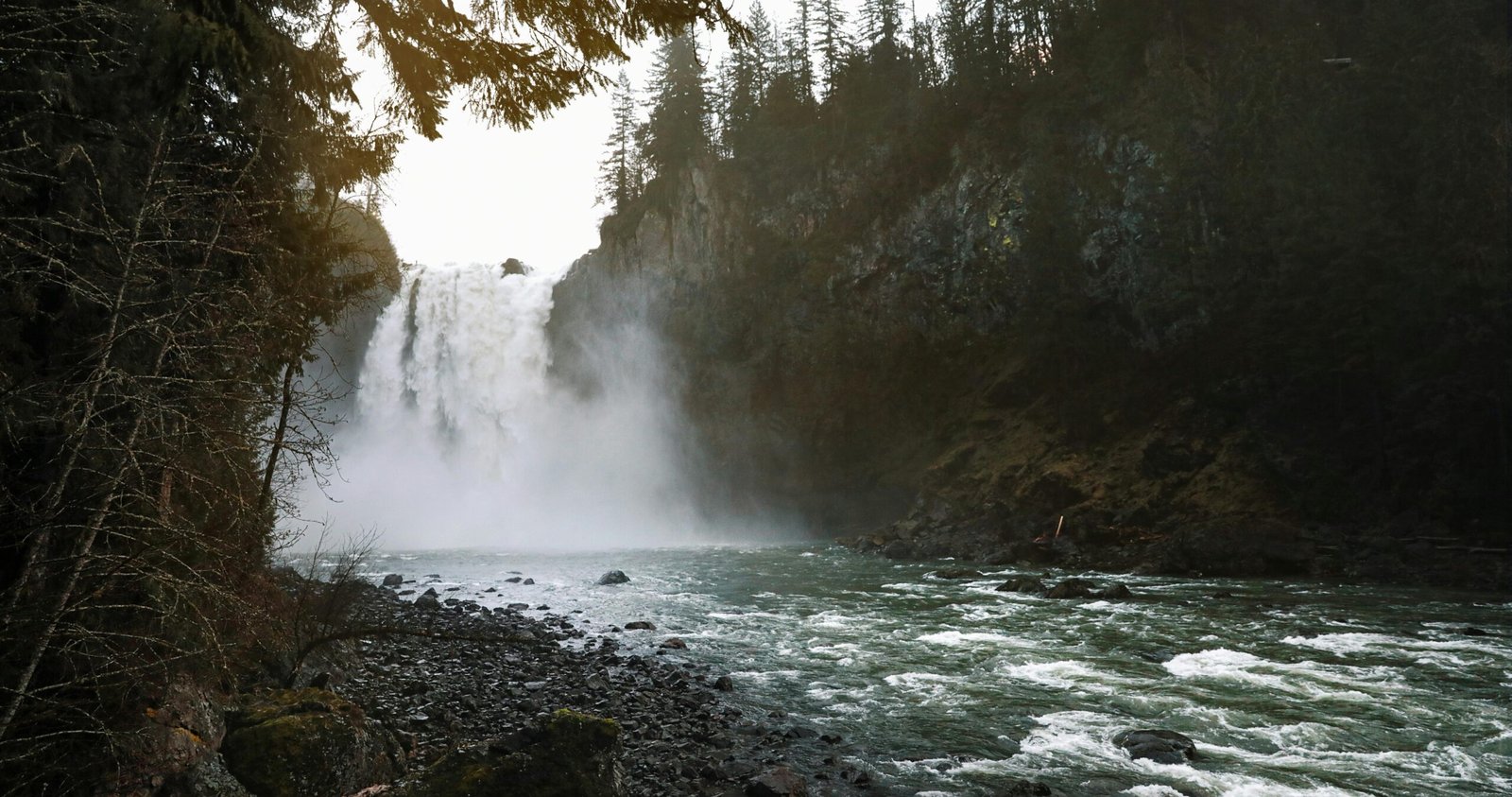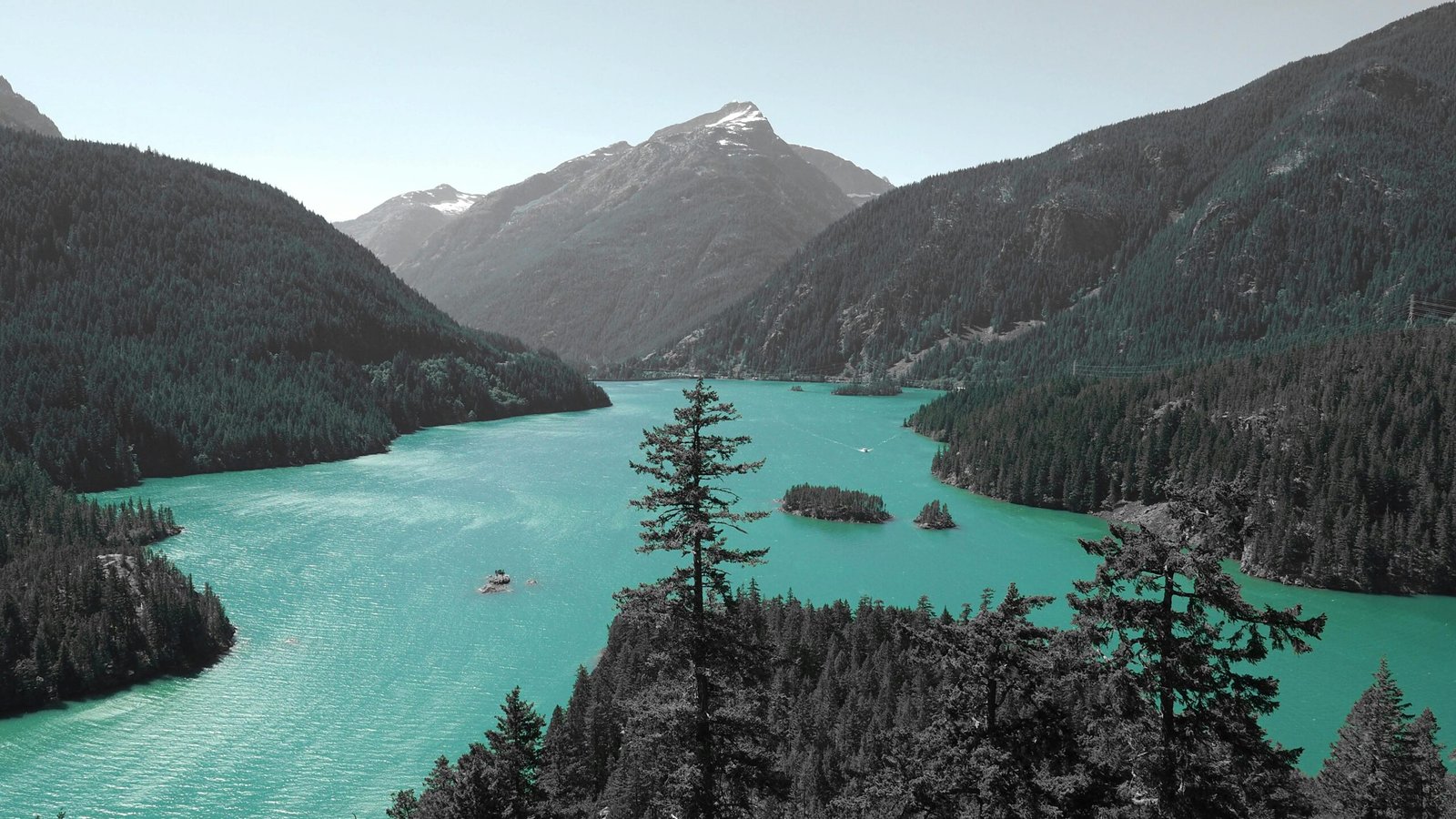Click on the comments section of any news story about a solo outdoor adventure gone wrong and you’ll see a flood of comments about how unsafe it is to be outside alone… let alone outside, alone, AND a female?! Outrageous!
And here I’ve been outdoor adventuring as a solo female for over 8 years and have over 4,000 solo miles. I was unable to find any solid data comparing search and rescue stats for solo travelers vs. groups; however, from my personal experience I’ve seen about 1 solo rescue to every 10 group rescues. Solo disasters make the news. As a societal species, it can be difficult to imagine doing anything alone, let alone being injured or even dying alone- in the wilderness. As a culture, we are fascinated with women that choose to remain single and/or childless and its assumed if you’re alone you’re lonely and miserable. Those projections directly translate to our ideas about solo adventurers- is it possible to be both safe and alone in the wilderness? And a woman?
Certain risks are inherent every single time you step outdoors. There are ways to mitigate those risks- but the risk level will never be zero. Some risk will always exist whether you’re alone or with a group of solid, seasoned outdoor pros. Physical health, wildlife, extreme weather, wildfire, landslides, and rockfall are a few of the very real dangers to be taken into consideration before any trip. For me, the rewards of solo adventure are much bigger than the risks.
It’s important to note that these are MY experiences, and while I can share my experiences and the precautions I take, you’re the only person that can make the right choices for yourself.
Why do I travel solo?
The number one reason I began solo adventuring was simply that I didn’t know anyone that enjoyed the same things I do, and I finally decided that I wasn’t going to miss out on my bucket list for lack of a buddy. Somewhere along the way I heard the phrase “Anything worth doing is worth doing alone”, and that stuck with me.
Here are a few other reasons I solo travel:
Scheduling: My days off are irregular, and as a working adult its difficult to coordinate time off with friends that are juggling career, family, kids and life in general. Its difficult enough just meeting up for dinner, a multi-day adventure takes planning years in advance and is still likely to fall through. My first abroad trip happened when both of my friends had to bail on a PCT hike that was planned about about a year in advance (I went to Iceland and planned to be solo, but another friend was able to join last minute).
Interest: I don’t always know others interested in what I want to do, or maybe they’ve already been where I want to go. I’m not going to miss out on something I’m interested in just because I can’t find a buddy.
Freedom: If I want to hike hard or hike slow, or change my plans altogether- no one is relying on me, and no one will be let down or disappointed. I can wake up when I want, go to bed when I want, spontaneously stop at any roadside attraction that I want- the only one I compromise with is me. Ultimate self-care mode unlocked: There is really something extraordinary in only having to care for yourself (Helloooo all my fellow nurturers and people-pleasers!)
How do I stay safe?
At this point, I’ve got a lot of experience to fall back on; I’ve had injuries while solo, ran into unplanned bad weather, wildlife encounters, gear failure, you name it. I do think there are a lot of things that are difficult to learn until you’ve experienced them and gained the confidence of working through them. Most importantly, I’ve learned MY own limits. I’ve had to hike while ill, injured, tired, low on food/water, because that was the lot I drew or the result of a not-so-great plan. Through those mis-adventures, I learned my own personal tolerance levels. I have a firm grasp on how much water I need based on temperature, elevation, and distance, how far I can go without water/food, how far I can push on empty, and how many days I can mentally last in pouring rain.
With all that said, there are MANY things you can do as a solo adventurer to stay safe AND learn your own personal limits in a safe way. I follow all of these, whether I’m solo traveling in the back or front country.
Planning Stage:
10 Essentials. I carry all of them, all of the time. If you’ve never heard of them, here’s a great place to start: 10 Essentials and I’ve highlighted several below. I practice using ALL of my gear before I go. When I was first starting out, I practiced my bear hang in my backyard and setting up my tent in the rain, and everything else in between.
Take a class.
Trails Diverged offers wilderness preparedness, intro to backpacking, and map and compass navigation classes. There are lots of other companies that teach similar courses and you can likely find one close to your home. Online courses also exist, however I believe hands-on is best for these skill sets.
Wilderness First Responder/Wilderness First Aid.
I strongly recommend a Wilderness First Responder (WFR) class. Not only did this help me dial in my med kit, I also experienced real-life examples of scenarios that deepened both my awareness and preparedness. My favorite part of class is always using the normal things that I always carry in my pack to MacGuvyer a splint. The opportunity to get creative and think outside the box and familiarize myself with the material outside of an emergency situation built muscle memory that can be recalled during an emergency (it’s a very common physiological response to “freeze” during an emergency and the human brain can lose the ability to access “common sense”, but by practicing in a calm environment we build neurological pathways that will be more accessible in times of high stress).
Wilderness First Responder is definitely a pricey investment, if you can’t swing the investment, try a Wilderness First Aid (WFA) class. I’ve taken both and believe the WFR is more beneficial, however the WFA will still give you a great beginner skillset to carry with you into the great outdoors.
All of these options offer hands-on experience and help you to think about problems that you’d have never thought of because you haven’t had the opportunity to experience them yet.
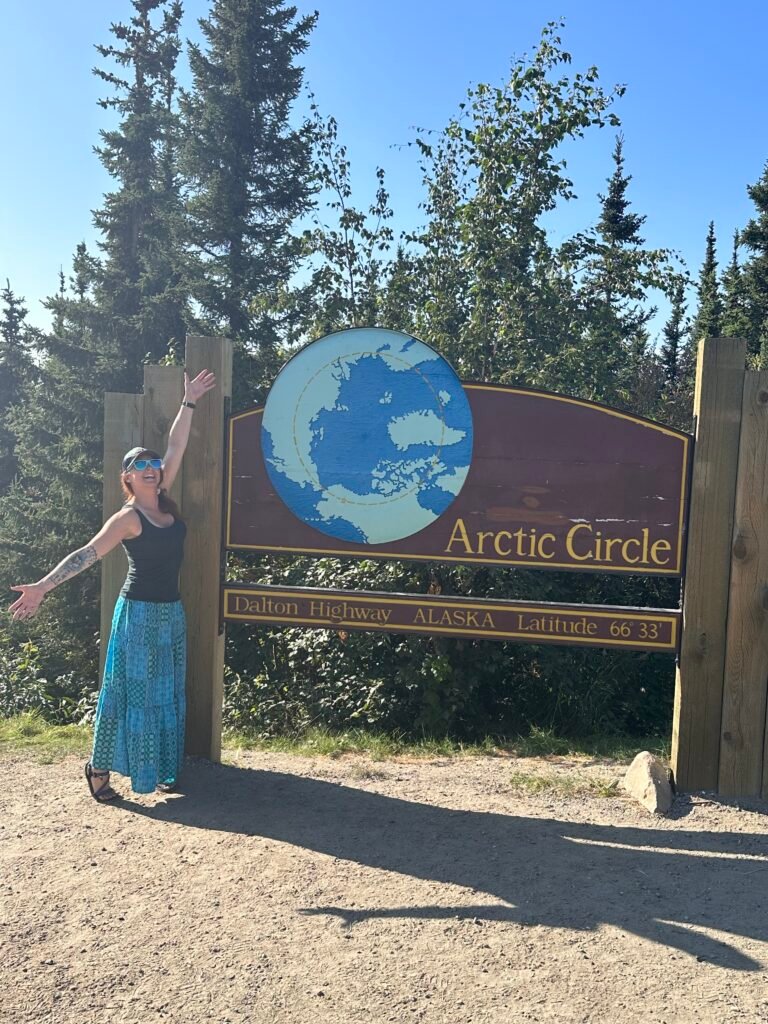
Map & Compass.
I carry them AND know how to use them, and I refresh before each trip. Take a class! Mapping apps are fabulous, but phones die, fall in the river, get carried off by hoarding marmots.
Waterproof your paper map (Ziplock works in a pinch, but I like to laminate mine or print them on waterproof paper), and have a zoomed out version available that clearly shows alternative emergency routes. Why? Well in the PNW, wildfires are a major issue, and we’ve had several instances of adventurers thinking they are just going a few miles in, no big deal- and then a wildfire blocks the only entrance/exit route that they knew and they became “trapped”.
I leave a map of my route with a trusted friend, along with my estimated time of getting back into cell signal. I also leave the contact info for the sheriff and ranger station within the areas that I’ll be traveling. Having these resources in advance shortens the response time in an emergency.
Have a backup plan.
3 years in a row I planned to go to North Cascades National Park, and all 3 years there were wildfire closures/evacuations. I worked hard to get the days off for that trip and get all of my gear in order, and it can be tempting to “go anyways”.
Don’t risk it, go with that plan B and still enjoy a trip a little different than you had hoped.
Know the water situation.
Is the water on the route seasonal or year-round?I always carry water treatment, and carry extra food- even on day hikes. After a few times of backpacking very hungry, I now carry a full bonus day’s worth of food. If you don’t want too much extra weight in your pack, you can grab some super high calorie bars or gels vs. actual meals.
Conditions: Wildfire, Wildlife, Landslide, Rockslide. Avalance
For Wildfire, I use the Watchduty app paired with local Facebook groups.
What types of wildlife are in the area? Recent encounters reported? Black bears or grizzlies (and do you know what to do for both?)
Avalanche territory? All of these things require a little something special in preparation mode.
For weather, I use NOAA and Mountain-Forecast.com, which allows me to see weather forecasts at difference elevations throughout the mountain. And even if its looking beautiful, I still carry all-weather gear because mountain weather can change quickly!
I also like to check in with the local ranger station for any trail updates or closures. Sometimes information will be available on the corresponding government website, but they are not always up to date. Local Facebook groups are also a great way to find recent trail reports.
Vehicle care before you go. Get that oil change and tire rotation you’ve been putting off before you head out on backcountry roads. Check road conditions (many mountain roads are closed well into Summer) before you go. When I am driving into the backcountry and while hiking, I pay attention to where I lose/gain service. If I breakdown, I know 7 miles back down the forest road is about where I’ll have signal.
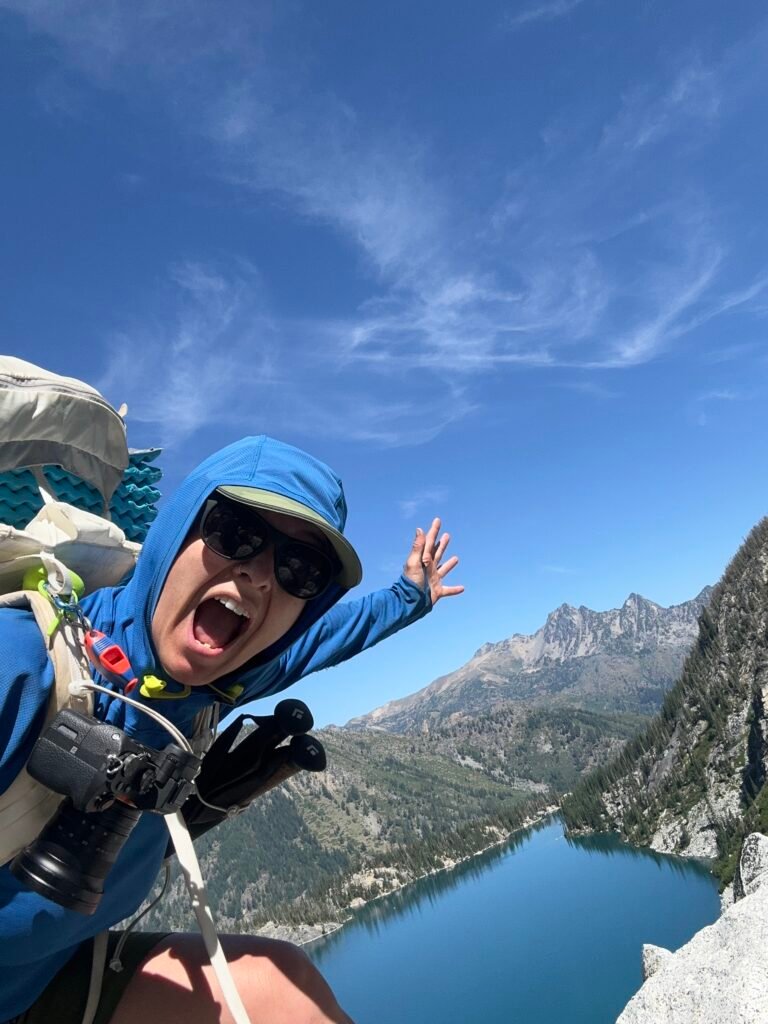
On Trail:
Satellite Communication Device.
With new cell phone features, there’s a chance that satellite devices will become obsolete and this TERRIFIES me- why? Like I said above, cell phones die and fall in rivers. Relying on one device to be your emergency comms, camera, weather, map, and more seems dangerous to me, and I’ll always carry my garmin in-reach even if my cell phone has the ability to send texts via satellite.
Social Media.
We all love sharing the enchanting, otherworldly places that captivate us; I save those posts for my return home. I NEVER post a photo while I am still in the location, this helps me avoid any unwanted visitors capitalizing on my alone-ness and the meta-data that is shared in those social media pics.
Mapping Apps.
I prefer using the Gaia app because I find it to be the most user friendly, and I like to print my maps on Caltopo. I do always have 2 mapping apps with my route because I have had situations where one app crashed. Its very important to download maps for offline use prior to losing cell signal; this is an often overlooked step that people don’t realize until they are in the wilderness. I do recommend avoiding reliance upon user-generated mapping apps; I’ve seen a lot of people get into trouble with using them for their routes (I do see value in the trail and water condition updates that users provide).
Know your limits. Know when its ok to push and when its time to cut it short.
I think I started to learn my personal limits when I began doing endurance sports/triathlons. I remember people using the phrase “dig deep” and thinking “I’m already deep, I can’t catch my breath- this is as deep as it gets, time to stop!”
I did eventually learn about that second wind, and as I got more familiar with it, I learned how to work through the discomfort and know that the second wind was going to be there and I’d be able to push past that discomfort. There can be a fine line between discomfort and pain/risk, and I’ve really learned how to read my body. There are plenty of times that I’ve pushed thorough minor injuries, blisters, and other discomforts because I knew life and limb weren’t in true danger, but I also know when to bow out.
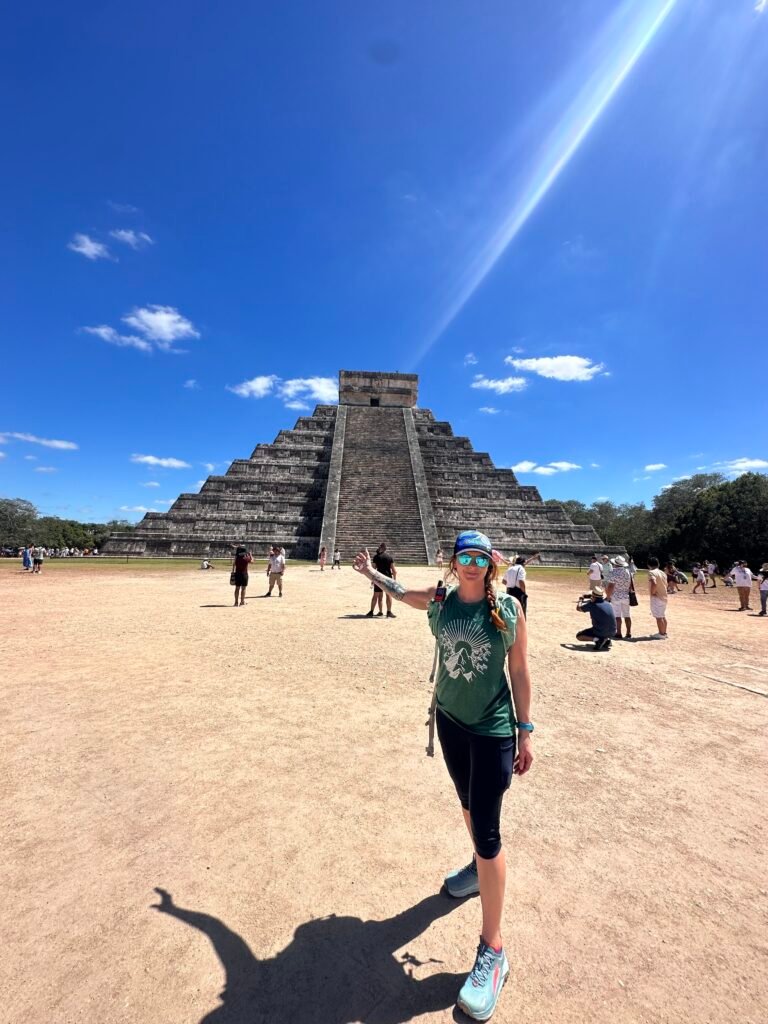
Not long ago, I was on a Search and Rescue mission and had to make the difficult choice to leave midday. It was one of our extremely hot days and I took care of myself like I usually would- hydration, food, electrolytes and cooling techniques. A few hours in, I began to feel a little “off”. I’m usually pretty stable-footed and I had several missteps and lost my balance, and I knew right away that it was unusual for me. I ate a bar and got some more hydration in, and continued to self-monitor. I had a few more missteps, felt the onset of a headache, and was having difficulty focusing on others that were speaking. At that point, I knew the only way to feel better was to get out of the heat.
I hated it. I hated letting down my team, hated that I felt weak- but I also knew it was the right call and that continuing would put myself and my teammates at risk.
Do I carry?
I “open carry” bear spray and knife, on my hip belt where I can grab both quickly and easily-even when not in bear country. Bear spray is just as effective on humans that want to harm me as it is other animals that may want to harm me!
I’m frequently asked what I do when there are sketchy humans; in all my miles I’ve only come across two- both on the Appalachian Trail close-ish to roads/towns (vs. deep in the wilderness). One man was severally agitated and talking to himself/pacing around and then started swearing loudly at me. On another really hot day, I was passed by a man further from trail access (over 10 miles) that had nothing with him- no backpack, no water bottle, nothing. When he passed he made a few comments about me being alone- people love to make that commentary so that in itself wasn’t unusual, and while nothing outwardly untoward occurred, it raised my hackles and my intuition told me that I needed some distance.
What did I do?
In both situations I was already familiar with the area surrounding the trail from checking the maps beforehand. I kept my distance while maintaining eyesight, and altered my route. To anyone watching, I appeared to go in one direction while ultimately changing course. In the first situation, I backtracked in a wide arc with some bushwhacking toward where I had seen other hikers taking a break, met up with them and explained the situation.
Am I admitting creepy situations can happen? Yeah, but I’ll also tell you that was only two somewhat eerie situations over thousands of miles; when I worked in Minneapolis and downtown Detroit I was approached and harassed in a much more aggressive manner every. single. day.
I believe that situational awareness is vital to any solo experience, front country or back country. Always trust your gut.
Where to Start?
Test out your first solo adventure close to home, in cell service. Maybe even just at a local State Park or other popular campground. See what comes up for you- fear, anxiety, peace? Get deeper with those fears; is it the animals that you’re afraid of? Injury? What have you done to prep for those fears? Maybe the next time, explore just outside of cell service for one night. You can also choose a popular trail that will allow you to have somewhat of a solo experience, while also having the comfort of knowing there are other travelers near by in case of emergency.
If you’ve never hiked alone, start with a day hike in cell service before jumping in to an overnight and see how it goes for you. You’re in charge and you can backout or packup and go home anytime you want!
“A ship is always safe at shore, but that is not what its built for.”- Einstein.
Solo travel can be empowering and a real chance to get to know yourself physically, emotionally, and spiritually. The confidence I’ve built through self-reliance is carried back home with me into the front country. While I’m always happy to have a buddy along, knowing that I don’t need one and can not only survive but THRIVE means that I’ll never have to miss out on any of my dreams.
While pulling photos for this article, I looked at all of the amazing places and experiences I’ve been alone and it hit me even harder- to think that I’d have missed out all of those experiences because I didn’t have someone to go with? The regret 90 year old me would have had keeping my boat at shore is palpable. It may not be for everyone (and that’s ok!) but for those curious, a little prep and experimentation goes along ways.
If you’re interested in solo exploration and have specific questions, please reach out!

